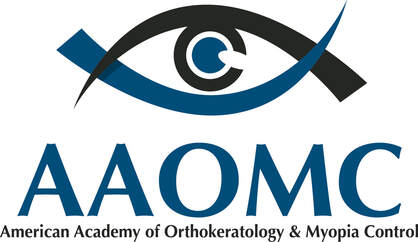Myopia control therapy

What is progressive myopia?
Progressive myopia, also referred to as near-sightedness or short-sightedness, causes your child’s eye to grow larger from early childhood into early adulthood. This elongation of the eye is what causes changes to your child’s vision. This is what causes poor distance vision and usually requires a new prescription at least once every year or more.
What causes progressive myopia?
The most common causes of progressive myopia are thought to be:
Since blurry vision can be managed with glasses, isn’t that enough?
No, more can be done with present technology than previously thought possible. Regular glasses or contact lenses adjust for your child’s inability focus clearly but do nothing to address the elongation of the eye itself or slow the harmful progression of myopia.
Why is progressive myopia bad?
Progressive myopia is dangerous. The more aggressive the progression, the more likely your child is to develop advanced vision problems later in life. These problems include retinal detachment, glaucoma, and macular-degeneration which are leading causes of blindness.
What can be done to prevent the progression of myopia?
Orthokeratology
Orthokeratology is a computer-designed, vision retainer which reduces the optical stimuli that cause progressive myopia. While similar to contact lenses, the vision retainers are worn only at nighttime during sleep. They are then removed upon awakening. When wearing a vision retainer during sleep, children are able to remove their retainers in the morning and see clearly all day long, without the assistance of glasses or contact lenses.
Multifocal Soft Contacts
Multifocal soft contact lenses are worn in the same way as conventional daily-disposable, soft contact lenses, but are more optically sophisticated. In addition to adjusting for blurry distance vision, precise adjustments are made to your child’s near and intermediate vision as well. These finely tuned changes reduce the stimuli which cause progressive myopia.
Atropine Eye Drops
These drops disable the eye's focusing mechanism to control myopia. Atropine is a similar chemical to what is used for routine dilation of the eye. Drawbacks to using these drops are poor long-term results and the likelihood of potential side-effects during and after use.
Progressive myopia, also referred to as near-sightedness or short-sightedness, causes your child’s eye to grow larger from early childhood into early adulthood. This elongation of the eye is what causes changes to your child’s vision. This is what causes poor distance vision and usually requires a new prescription at least once every year or more.
What causes progressive myopia?
The most common causes of progressive myopia are thought to be:
- Genetic risk factors.
- Reduced exposure to sunlight.
- Excessive close-up work or play.
- Inaccurate stimuli of light on the retina.
Since blurry vision can be managed with glasses, isn’t that enough?
No, more can be done with present technology than previously thought possible. Regular glasses or contact lenses adjust for your child’s inability focus clearly but do nothing to address the elongation of the eye itself or slow the harmful progression of myopia.
Why is progressive myopia bad?
Progressive myopia is dangerous. The more aggressive the progression, the more likely your child is to develop advanced vision problems later in life. These problems include retinal detachment, glaucoma, and macular-degeneration which are leading causes of blindness.
What can be done to prevent the progression of myopia?
Orthokeratology
Orthokeratology is a computer-designed, vision retainer which reduces the optical stimuli that cause progressive myopia. While similar to contact lenses, the vision retainers are worn only at nighttime during sleep. They are then removed upon awakening. When wearing a vision retainer during sleep, children are able to remove their retainers in the morning and see clearly all day long, without the assistance of glasses or contact lenses.
Multifocal Soft Contacts
Multifocal soft contact lenses are worn in the same way as conventional daily-disposable, soft contact lenses, but are more optically sophisticated. In addition to adjusting for blurry distance vision, precise adjustments are made to your child’s near and intermediate vision as well. These finely tuned changes reduce the stimuli which cause progressive myopia.
Atropine Eye Drops
These drops disable the eye's focusing mechanism to control myopia. Atropine is a similar chemical to what is used for routine dilation of the eye. Drawbacks to using these drops are poor long-term results and the likelihood of potential side-effects during and after use.